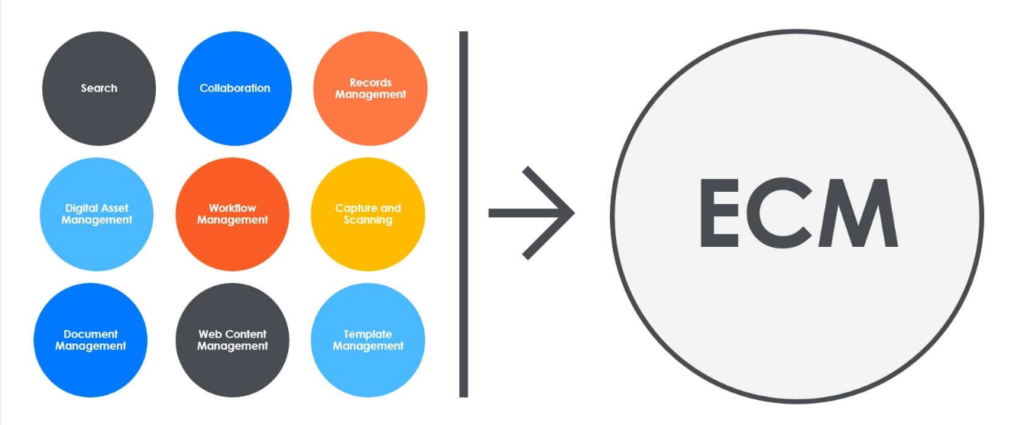In the digital age, companies are producing and consuming more content than ever before. This includes documents, videos, images, and other types of content. As a result, managing all of this content can become a daunting task. This is where Enterprise content management software (ECM) comes into play. This article will explore what enterprise content management is, the benefits of having an ECM strategy, and how to implement a successful ECM strategy.
What is Enterprise Content Management?

Source: pinterest.com
Enterprise content management (ECM) is the process of managing and organizing digital content within an organization. It involves capturing, storing, and distributing content in a way that makes it accessible to the people who need it, when they need it.
ECM systems are designed to help companies manage large amounts of content across different departments and locations. These systems provide a centralized location where all of the organization’s content can be stored, managed, and accessed. ECM systems also provide tools for workflow management, collaboration, and document automation.
Benefits of Having an ECM Strategy:
Having an ECM strategy offers several benefits to organizations, including:
- Improved Efficiency: With an ECM strategy in place, organizations can streamline their content management processes, reducing the amount of time and effort required to manage and distribute content.
- Increased Productivity: An ECM system can help employees find the information they need more quickly, reducing the time spent searching for documents and other types of content.
- Better Collaboration: An ECM system can improve collaboration between teams, allowing employees to work together on projects more effectively.
- Enhanced Security: An ECM system can provide enhanced security features, such as access controls and encryption, to protect sensitive documents and other types of content.
- Reduced Costs: By implementing an ECM strategy, organizations can reduce the costs associated with managing and distributing content.
Implementing a Successful ECM Strategy:

Source: youtube.com
Implementing a successful ECM strategy requires careful planning and execution. Here are the key steps to follow:
- Identify your Content: The first step in developing an ECM strategy is to identify the types of content that your organization produces and consumes. This can include documents, images, videos, and other types of content.
- Determine your Content Needs: After identifying the types of content, it is important to determine the needs of the organization in terms of how this content is managed and accessed. This can include defining content policies, identifying who needs access to the content, and determining how the content will be organized.
- Choose the Right ECM System: Once you have determined your content needs, you can choose an ECM system that meets those needs. There are many different ECM systems on the market, so it is important to evaluate your options carefully.
- Define Workflow Processes: With an ECM system in place, the next step is to define the workflows for managing and distributing content. This can include defining the roles and responsibilities of different stakeholders, as well as the processes for reviewing, approving, and distributing content.
- Develop a Training Plan: With your ECM system and workflows in place, it is important to develop a training plan for employees. This should include training on how to use the ECM system, as well as training on the organization’s content policies and workflows.
Conclution:
Enterprise content management software has a tremendous range of uses and applications. Any company that produces, consumes, or stores content for various purposes can benefit from it. The more complex your enterprise is, the more you’ll realize the value of an ECM solution. An investment in a well-designed ECM system will assist you in maximizing your return on content, working more efficiently and effectively, and improving the quality of your outputs.